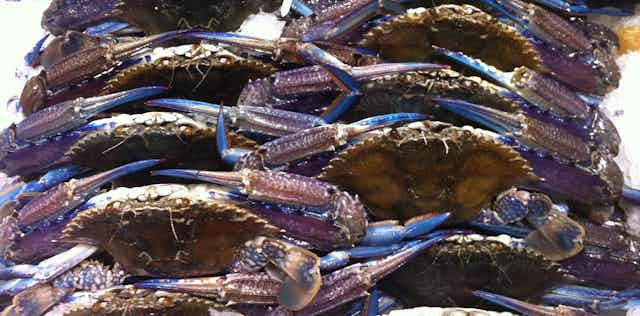What’s the worst thing you could be burdened with this Valentine’s Day? Unrequited love? Unwanted affection? Unpaid invoice from the local florist? How about an itchy dose of pubic lice?
Pubic lice, Phthirus pubis, or “crabs” as more commonly known, were once thought to be one of the most contagious sexually transmitted infections, but they rarely rate a mention in most sexual health research these days.
Perhaps their absence from the sexual health spotlight is due to the lack of serious health implications associated with infestation, the shifting grooming habitats of those most sexually active or, perhaps in the age of internet diagnosis, few people present their itchy nether regions to the local doctor.
Our parasitic companions
Pubic lice are thought to have been our parasitic companions for more than 10,000 years. There is paleoparasitological evidence of lice infestation throughout human history.
They weren’t just a problem of the poor either. The remains of royalty have been found infested. Even the rise of sanitation and bathing in the Roman Empire wasn’t enough to stop the spread of pubic lice.
Pubic lice aren’t the only creatures to adapt to life on humans. Head lice are no doubt enjoying the end of summer holidays as they infest little heads around the country.
While head lice have adapted perfectly to life among the hairs on the human head, pubic lice have adapted to warmer and more humid habitats of “you know where” filled with an abundance of coarse hair that provides an ideal refuge.

What are pubic lice?
Pubic lice are small six-legged insects about 1.5mm long. They have a crab-like appearance with large claws perfectly designed for a life clinging to and scurrying up and down pubic hair.
They don’t live long, perhaps less than a month, but a female louse can lay around 30 eggs during that time, ensuring a steady population of lice is maintained. Once off the hair, they’re clumsy and lucky to survive a couple of days.
They’re typically found on hair in the pubic region but can live anywhere coarse hair is found. This may include the beard, eyebrows and eyelashes, as well hair on the chest and in the armpit. Pubic lice are rarely, if ever, found in head hair.
There appears a strong link between the lice found on the ancestors of gorillas and our own pubic lice. That’s right: more than three million years ago our ancestors and those of gorillas were both in the right place at the right time (at least from the pubic louse’s point of view). The lice didn’t evolve as we did, they skipped between hosts much more recently than the time when gorillas and humans made the evolutionary step away from a common ancestor.
They don’t fly or jump. They move from host to host through direct contact and, for the most part, this is through sexual contact. Not always, but most commonly.
A tangle of pubic hair provides a perfect opportunity for lice to “jump ship” to a new host. This migration most commonly happens when the lice move from hair strand to hair strand. They do so perhaps a little less athletically than Tarzan swinging on jungle vines from tree to tree but no less effectively.
Estimates put the prevalence rate of pubic lice infestation in adults at around 1-2%. Rates can be a little higher in older individuals, especially men and men who have sex with men.
That means about 750,000 people who use Tinder have crabs. Ponder that this Valentine’s Day.
What are the health risks?
As these parasites feed on human blood, they’re prone to causing skin irritation including raised, red lumps and an intense itchiness. The irritation is not caused by them scurrying around as most people would think. It’s caused by an irritation of the skin when the lice inject their saliva to get the blood flowing in order to feed. They feed a few times each day.
Luckily, they’re not associated with the transmission of any disease-causing pathogens. However, there’s evidence that pubic lice may be an indicator of other sexually transmitted infections, such as chlamydia. This relationship has led to the proposal that these lice may be the “canaries in the coal mine” for sexually promiscuous segments of the community and the health risks they face.
Unlike most other sexually transmitted infections, condoms won’t stop pubic lice swinging across to a new person during sex.
Goodbye pubic lice
Treatment is relatively straightforward. Insecticide creams are available and so long as insecticide resistance is kept at bay, should stop infestations. Remove your hair down there and pubic lice will disappear too (but keep in mind the public health considerations of pubic hair removal).
Trends in hair removal are often linked to loss of pubic lice habitat but there simply is not data to support the hypothesis that pubic lice are “going extinct”. Such claims make for great headlines but there is little evidence, let alone logic, behind the claim.
It may be true that complete hair removal will prevent pubic lice setting up home, but are all those currently sexually active bare down there? Not likely. Pubic lice have been with us for thousands of years and they’ll be with us for thousands more.

